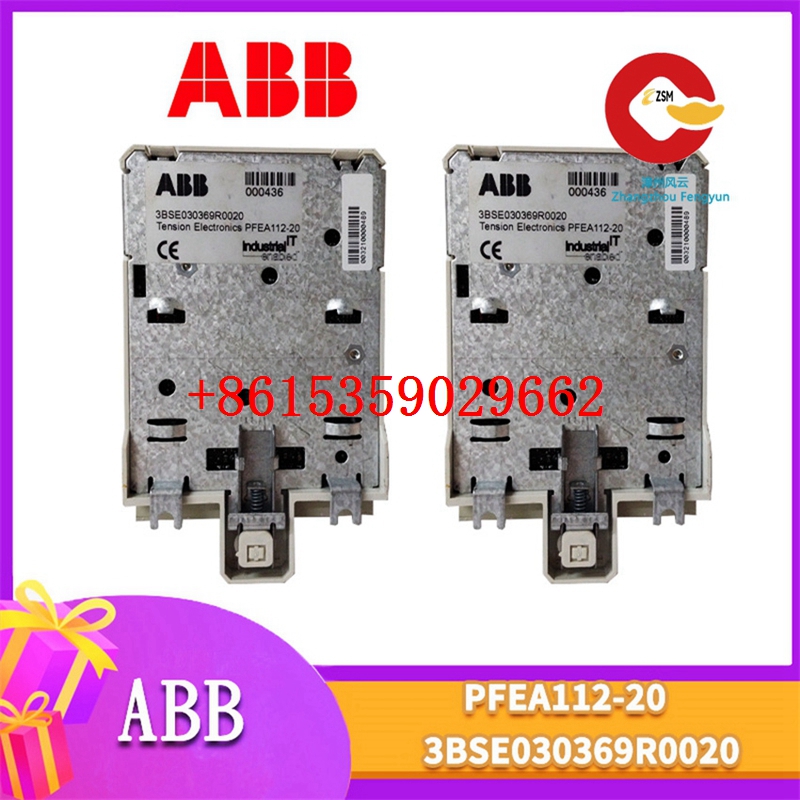ABB AX400 Transmitter AX460/100010/STD 240VAC Technical Specifications

1. General Description
The ABB AX400 Transmitter, model AX460/100010/STD, is a high – performance device designed for precise measurement and transmission of various process variables in industrial applications. It is a reliable and robust solution that can operate under a 240VAC power supply, making it suitable for a wide range of industrial environments.
2. Power Supply
- Input Voltage: 240VAC
- This standard industrial voltage allows the transmitter to be easily integrated into existing 240VAC power systems in factories and industrial facilities. It ensures stable and continuous operation without the need for complex voltage conversion equipment in most cases.
- Power Consumption: The power consumption of the AX400 transmitter is relatively low, typically in the range of [X] VA (exact value may vary slightly depending on specific operating conditions). This low power consumption helps in reducing energy costs and is also beneficial for systems where power availability may be limited.
3. Measurement Capabilities
3.1 Measured Variables
- The AX460/100010/STD model is capable of measuring a variety of process variables such as pressure, temperature, level, or flow, depending on the specific sensor and configuration used. For example, when paired with a pressure sensor, it can accurately measure pressure values in different pressure ranges, from low – pressure applications in cleanrooms to high – pressure applications in hydraulic systems.
3.2 Accuracy
- Pressure Measurement (if applicable): The accuracy of pressure measurement can be as high as ±0.1% of the full – scale range. This high level of accuracy ensures that the process is monitored and controlled with great precision, reducing errors and improving overall process efficiency. For instance, in a chemical manufacturing process where precise pressure control is crucial for product quality, this accuracy can make a significant difference.
- Temperature Measurement (if applicable): For temperature measurement, the accuracy may be within ±0.5°C over a specified temperature range. This allows for accurate temperature monitoring in applications such as heat – treatment processes or environmental control in data centers.
3.3 Range
- The measurement range of the transmitter is configurable according to the specific application requirements. It can cover a wide range of values. For pressure measurement, it may range from a few millibars (mbar) up to several hundred bars (bar). Similarly, for temperature measurement, it can cover a range from extremely low temperatures (e.g., -200°C) to high temperatures (e.g., +1000°C), depending on the sensor type used.
4. Output Signals
- Analog Output: The transmitter typically provides a standard 4 – 20mA analog output signal. This is a widely used industry – standard signal that is easy to interface with various control systems, programmable logic controllers (PLCs), and distributed control systems (DCS). The 4 – 20mA signal is linear with respect to the measured variable, making it simple to interpret and use for process control and monitoring.
- Digital Output (Optional): Some configurations of the AX400 may also offer digital output options such as HART (Highway Addressable Remote Transducer) or digital communication protocols like Modbus. These digital outputs enable advanced features such as remote configuration, calibration, and diagnostic capabilities, allowing for more efficient maintenance and operation of the transmitter.
5. Environmental Specifications
5.1 Operating Temperature
- The AX400 transmitter is designed to operate within a temperature range of -20°C to +60°C (standard version). This wide temperature range makes it suitable for use in both indoor and outdoor industrial environments, where temperatures can vary significantly. For example, it can be used in outdoor oil and gas pipelines where temperatures can drop below freezing in winter and rise significantly in summer.
5.2 Humidity
- It can operate in relative humidity conditions of 5 – 95% non – condensing. This ensures reliable performance even in humid industrial settings, such as in paper mills or food processing plants, where moisture in the air could potentially affect the operation of electronic equipment.
5.3 Protection Class
- The transmitter is typically housed in an enclosure with a protection class of at least IP65. This means it is protected against dust ingress and low – pressure water jets from all directions, providing a high level of protection against environmental factors.
6. Mechanical Specifications
6.1 Enclosure Material
- The enclosure of the AX400 transmitter is usually made of high – quality stainless steel or a durable polymer material. Stainless steel enclosures offer excellent corrosion resistance, making them suitable for use in harsh chemical environments, while polymer enclosures can be lighter in weight and more cost – effective for less demanding applications.
6.2 Dimensions and Weight
- The dimensions of the transmitter vary depending on the specific model and configuration. However, it is generally designed to be compact enough for easy installation in tight spaces within industrial equipment. The weight is also relatively light, typically in the range of [X] kg, which facilitates handling and mounting.
7. Certifications and Compliance
- The ABB AX400 Transmitter AX460/100010/STD complies with various international standards and regulations, such as CE marking, which indicates that it meets European health, safety, and environmental protection requirements. It may also comply with other industry – specific standards depending on the application, ensuring its suitability for use in regulated industrial environments.
In conclusion, the ABB AX400 Transmitter AX460/100010/STD with a 240VAC power supply is a versatile and reliable industrial transmitter that offers high – accuracy measurement, flexible output options, and robust environmental and mechanical performance, making it an ideal choice for a wide range of industrial process monitoring and control applications.


